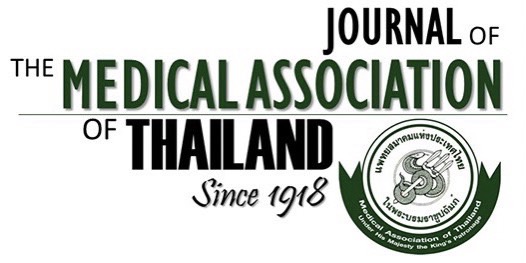Predictive Model for Non-Sentinel Lymph Node Status in Thai Breast Cancer Patients with Positive Sentinel Lymph Node Biopsy
Ronnachai Buppanharun MD*, Doonyapat Sa-Nguanraksa MD, PhD*, Malee Warnnissorn MD**, Pornchai O-Charoenrat MD, PhD*
Affiliation : * Division of Head Neck and Breast Surgery, Department of Surgery, Faculty of Medicine Siriraj Hospital, Mahidol University, Bangkok, Thailand ** Department of Pathology, Faculty of Medicine Siriraj Hospital, Mahidol University, Bangkok, Thailand
Background : Sentinel lymph node (SLN) biopsy is a standard procedure for axillary staging in breast cancer patients with
clinically negative axillary nodes. Several models were developed to predict the probability of non-sentinel lymph node
(NSLN) metastases. However, differences in technique and setting may impact the accuracy of the models.
Objective : To create novel models for predicting the probability of NSLN metastases and to validate the existing models in
Thai breast cancer patients.
Material and Method: Breast cancer patients who underwent SLN biopsy at the Division of Head Neck and Breast Surgery,
Department of Surgery, Siriraj Hospital from January 2009 to October 2013 were recruited. All SLN biopsies were identified
by blue dye and immediately examined by frozen section. All frozen SLNs were defrosted and confirmed by permanent section.
The patients with positive SLN (either from frozen or permanent section) underwent axillary dissection. Associations between
clinico-pathological parameters and NSLN status were determined by Chi-square statistics. Logistic regression was performed
to create the predictive models.
Results : Four hundred and thirty breast cancer patients who had positive SLN and underwent axillary lymph node dissection
were recruited. NSLN metastasis accounted for 48.37% of the patients with positive SLN. In frozen section model, tumor type,
tumor size, lymphovascular invasion, and ratio of positive SLN were associated with NSLN status. Tumor type, tumor size,
ratio of positive SLN, and presence of extranodal extension of SLN were associated with NSLN status in permanent section
model. The area under the receiver operating characteristic (ROC) curve (AUC) = 0.754 for frozen section model and 0.781
for permanent section model. Validation of the models in 56 patients revealed AUC of 0.788 and 0.831 for frozen and
permanent section, respectively. The novel models better predict NSLN metastasis, when compared to the previously published
models.
Conclusion : The authors created two models using frozen and permanent section status of SLN which were practical and
accurately predict NSLN status for Thai breast cancer patients.
Keywords : Breast cancer, Sentinel lymph node biopsy, Axillary lymph node dissection, Predictive model



